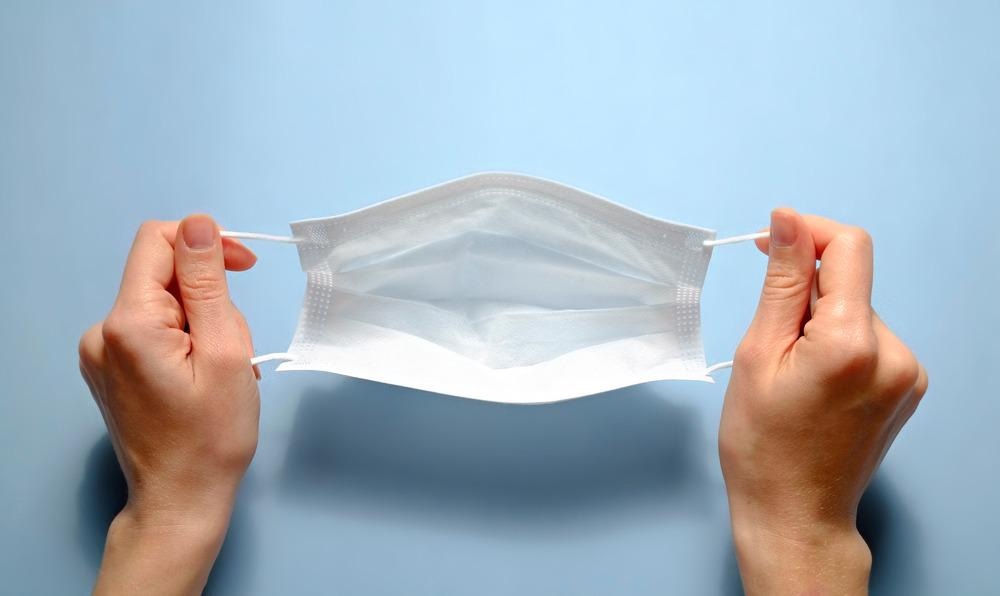A team of researchers from Saudi Arabia has presented their study in the journal Nanotechnology on nanotechnology-enabled techniques for use in face masks to protect better against SARS-Cov-2 and other airborne pathogens. The team also compared the effective use of nanotechnology-enabled facemasks with those currently available on the commercial market.

Study: Toward nanotechnology-enabled face masks against SARS-CoV-2 and pandemic respiratory diseases. Image Credit: evrymmnt/Shutterstock.com
Back in January 2020, the World Health Organization (WHO) communicated a public health emergency of international concern, in February the virus was identified as being SARS-Cov-2, and by March it was declared a global pandemic. During this time there was a noticeable upswing in the number of facemasks and face-coverings being worn in the public sphere: now, it has become a necessity and part of everyday life.
There has been a number of concerted international efforts to contain the spread of the virus including the rapid development of vaccines, implementation of social distancing measures, advances in therapeutic treatment, etc. However, one of the major shortfalls that have occurred during the pandemic is the failure to produce the requisite number of effective surgical-grade face masks on a global scale.
This has meant many people have had to improvise or create their own face coverings in order to venture into the public domain. Moreover, there has been a significant increase in counterfeit N95 surgical masks and other PPE entering the supply chain, which puts healthcare workers and the general public at risk.
Commercial Facemasks
Commercially available facemasks offer varying levels of protection against the SARS-Cov-2 virus: non-woven medical masks offer low filtering efficiency protection levels of around 33% while N95 surgical masks are up to 95% percent effective.
However, this efficiency level can drop if particles sizes drop below 300 nm—SARS-Cov-2 virus droplets can be as small as 65 nm. Another disadvantage of commercially available facemasks is that they become less effective when wet and can impede respiration which affects breathability.
Therefore, as a result of the potential viral transmissibility via ultra-small droplets, issues with breathability, in addition to the shortfall of efficient PPE (including facemasks) to fight against this pandemic confirms more must be done to develop facemasks to better protect health workers and the general public.
Therefore, there has been a global effort to design new effective face masks with improved filtration, exclusion/repelling qualities, and sensing capabilities using nanomaterials and nanostructures. However, it must be stated that wearing a face mask or covering currently available on the market is still highly recommended in the fight against the virus.
Nanotechnology in Face Masks
When considering the purpose of a face mask it ultimately comes down to two factors: depth filters and membranes. Depth filtration uses thickness to trap unwanted particles or droplets in either a single or multi-layer mechanism. Membranes on the other hand trap containments which are larger than the membrane pore size.
In either case, adding functional nanomaterials which have antiviral and/or hydrophobic properties may increase both the effectiveness and lifespan of a facemask. While most facemasks are intended for only single-use, due to high demand some allowance is being made for repeated use. However, the mask will typically lose its protection level with ease of repeated use.
The research team believes that implementing certain nanomaterials into face mask production methods could have some impact on the fight against the pandemic. Lead author, Professor of Electrical and Computer Engineering at King Abdullah University, Saudi Arabia Muhammad M. Hussain, states, “nanotechnology can enable safer, more durable, environmentally friendly, reusable, and lower cost face masks which can be developed using simple fabrication techniques.”
Hussain and his team discovered that using nanofibers instead of microfibers has higher capture efficiencies in the submicron range of 100-500 nm, however, a pressure drop does occur and nanofibers are typically more expensive to scale up. Therefore, the team recommends a combination of nano- and microfibers for face mask production.
Using a simple electrospinning technique to combine nano- and microfibers facilitates function filtration materials at a relatively low cost for use in face masks.
The charging of the fibers using nanomaterials such as silica nanoparticles with excellent charge storage capability has shown the potential of enhancing the filtration efficiency where both, the mechanical and electrostatic attraction mechanisms, come into play
Muhammad M. Hussain, Lead author, Professor of Electrical and Computer Engineering at King Abdullah University, Saudi Arabia
The team also advocates for the use of surface treatments and applied coatings, using nanotechnology-enabled coatings that demonstrate the potential for deactivating the SARS-Cov-2 virus.
These coatings also demonstrated water repulsion activity as well as exhibiting the potential for reuse via a novel photothermal laser-induced coating, which “quickly heats up to 80°C under sunlight and thus contributes to destroying the virus and disinfecting the mask for future uses,” explains Hussain.
The elements used in these coating included nanoparticles of graphene, silver, and titanium dioxide, all of which demonstrate anti-viral characteristics and can be easily applied to face masks for general use.
The researchers have proven in their review, published in the journal Nanotechnology, that nanotechnology has significant potential in the fight against the current pandemic when used in face masks.
References
El-Atab N, Mishra RB, Hussain MM. Toward nanotechnology-enabled face masks against SARS-CoV-2 and pandemic respiratory diseases. Nanotechnology. 2021 Nov 2. doi: 10.1088/1361-6528/ac3578. Epub ahead of print. PMID: 34727530. https://iopscience.iop.org/article/10.1088/1361-6528/ac3578
Disclaimer: The views expressed here are those of the author expressed in their private capacity and do not necessarily represent the views of AZoM.com Limited T/A AZoNetwork the owner and operator of this website. This disclaimer forms part of the Terms and conditions of use of this website.